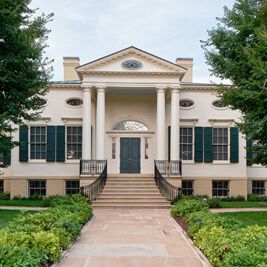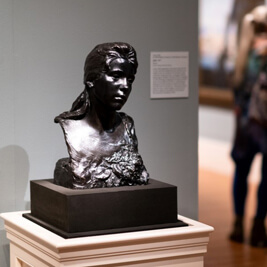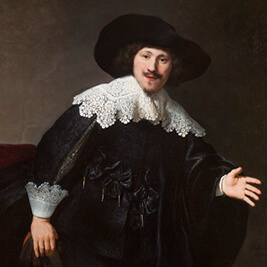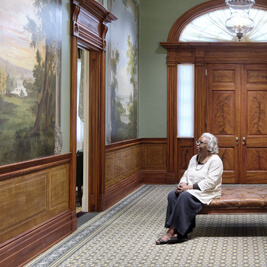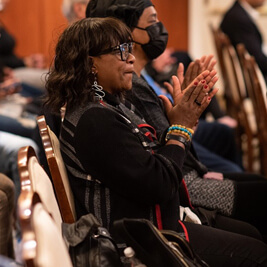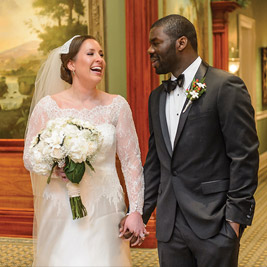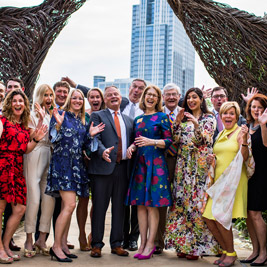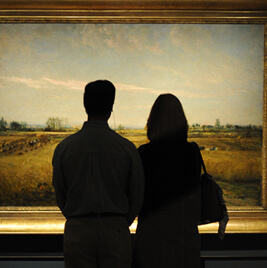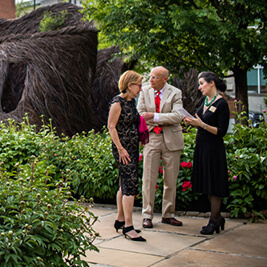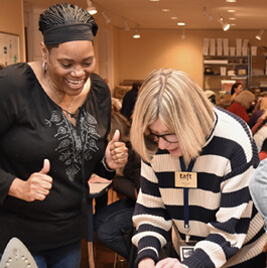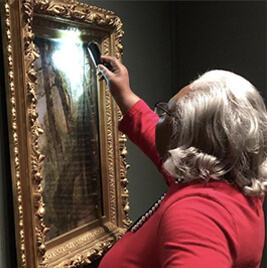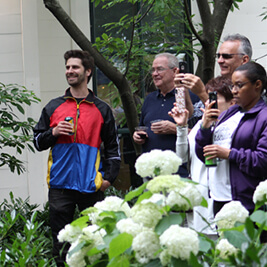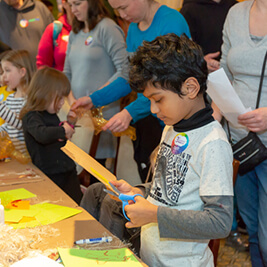- Do + See
- Dine + Host
- Give + Join
- Educate + Learn
The Tafts and Cincinnati Art
By Tamera Lenz Muente, Associate Curator
The special exhibition A Splendid Century: Cincinnati Art 1820–1920 highlights the impact made on art in the city by the former residents of the Taft Museum of Art’s historic house. Charles and Anna Taft were the last of these residents. In 1900, after Anna inherited her father David Sinton’s $20 million estate (over $500 million today), the Tafts became philanthropists and art collectors who made a lasting mark on visual art in the Queen City.
A Model Collection
The Tafts intended their collection to be a resource for local artists and artisans. They bought European portraits and landscapes that could inspire and instruct local artists who made a living painting those subjects. Chinese porcelains and European ceramics might serve as inspiration for designers and decorators. Such educational models were in demand in Cincinnati. By the late 19th century, the McMicken School of Design (later called the Art Academy of Cincinnati) was providing high-quality academic training in the visual arts, producing artists who secured employment at nationally renowned local businesses like Strobridge Lithographing Company and Rookwood Pottery. Other Art Academy graduates left the city to study and work in Europe. Some of these artists returned to Cincinnati, while some remained expatriates. Still others found inspiration elsewhere in the United States, joining art colonies on the East Coast or traveling to the West. The Tafts would have been aware of this creative migration and perhaps hoped to retain more homegrown artists in Cincinnati.
Buying Local
With their interests focused on European art and Chinese ceramics, the Tafts purchased a few works by American artists, including two by Cincinnatians (they also inherited marble busts by Hiram Powers and eight landscape murals by Robert S. Duncanson). Around 1905, the Tafts acquired Henry Farny’s The Song of the Talking Wire, and in 1918 they bought Frank Duveneck’s The Cobbler’s Apprentice. What attracted the couple to these works, the only two paintings by local living artists the Tafts purchased that still remain in the collection?
It is likely that the Tafts knew Farny well. In addition to the large painting still in the Taft Museum of Art collection, they once owned at least two smaller works by Farny—possibly gifts—which hung in Anna’s sitting room. In a 1909 letter, Anna flattered the artist as she thanked him for a painting, writing, “I am willing to admit without discussion that your “Young Hunter” is worth more than all of our Old Masters.”1 Along with Farny, Duveneck was considered a Cincinnati master, and the Tafts bought The Cobbler’s Apprentice just months before the artist’s death. Charles must have admired Duveneck’s work, since two years earlier he had presided over the purchase of one of his paintings for the University Club.
Sharing Art with the Public
Although they purchased few works by Cincinnati artists, the Tafts were deeply connected to the city’s visual arts and were invested in making art available for study and viewing. They were closely involved in the founding of the Cincinnati Art Museum. Anna was a member of the Women’s Art Museum Association, which promoted the establishment of a public art museum, and Charles was a museum trustee for forty years, serving as president of the Cincinnati Museum Association from 1914 to 1927. On select Sunday afternoons, the Tafts opened their home to artists, including members of the Cincinnati Art Club. As early as 1909, desiring to make their collection even more accessible to the public, the Tafts drew up plans to build an art gallery adjacent to their home to exhibit their collection, but this project never came to fruition. Cincinnatians would have had the opportunity to see works from the Taft collection in 1911, when it was lent to the Cincinnati Art Museum for an exhibition.
Finally, in 1927, the Tafts made their crowning contribution when they bequeathed their art collection and home to the people of Cincinnati “in such a manner that they may be readily available to all.” Along with this gift, they pledged $1 million to establish the Cincinnati Institute of Fine Arts—with the requirement that Cincinnatians raise $2.5 million—to endow not only the Taft Museum, but also the Cincinnati Symphony Orchestra, the Conservatory of Music, and the Cincinnati Art Museum, thus supporting the city’s culture for the long term. Today, the Institute is known as ArtsWave, which manages an annual multimillion-dollar campaign for Cincinnati’s arts organizations. The Taft Museum opened in 1932, and the historic house filled with art treasures continues to educate and inspire visitors—including artists—of all ages.
1. Anna Sinton Taft, letter to Henry Farny, December 27, 1909, Estate of William Droppelman, photocopy in Taft Museum of Art file, 1931.466.
